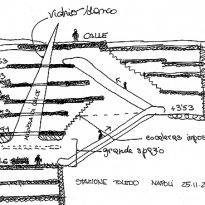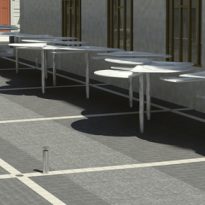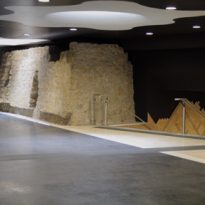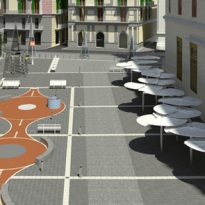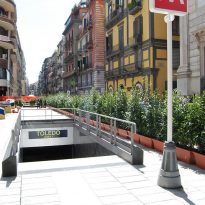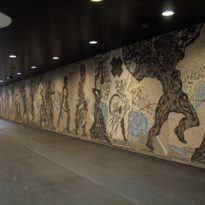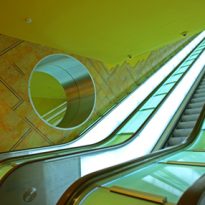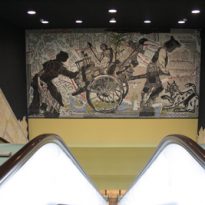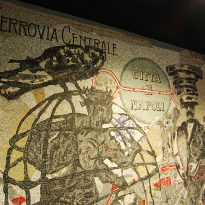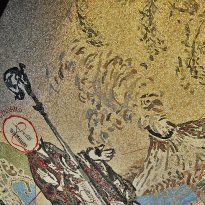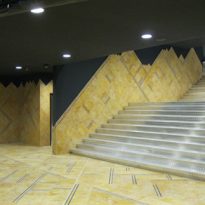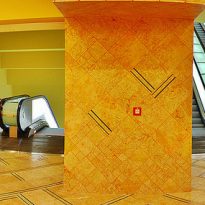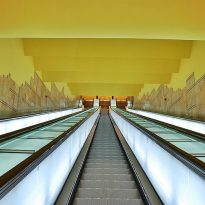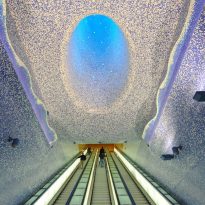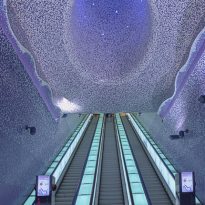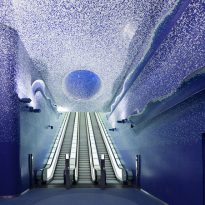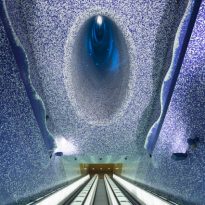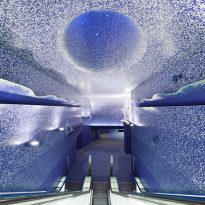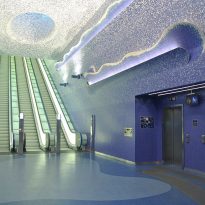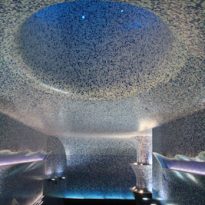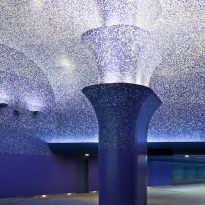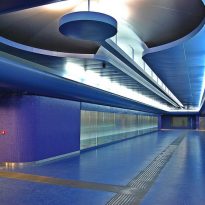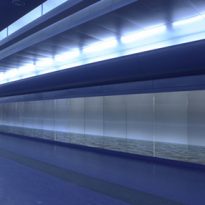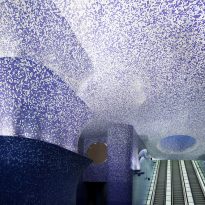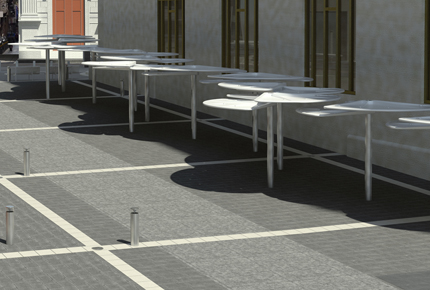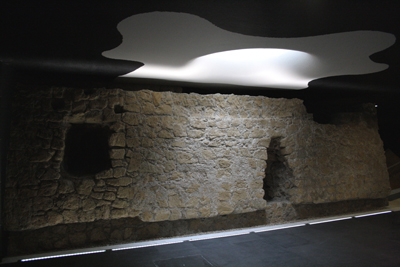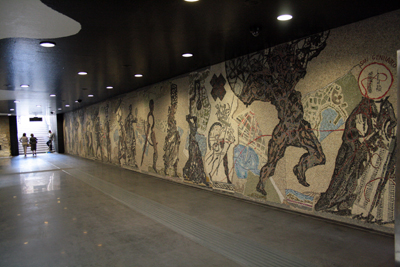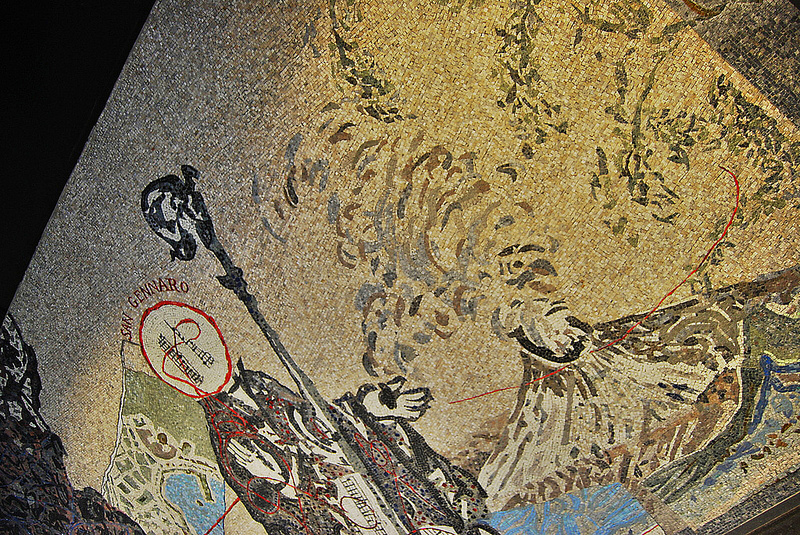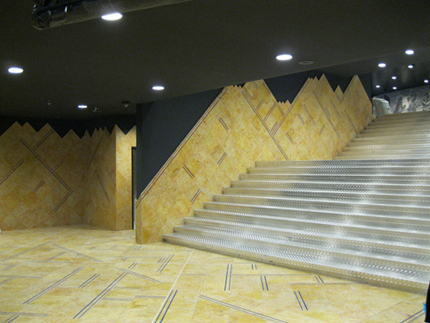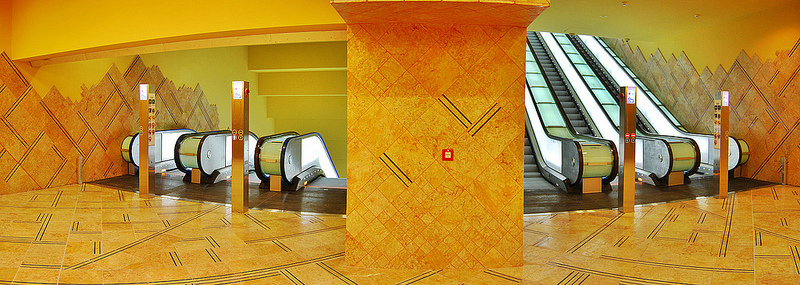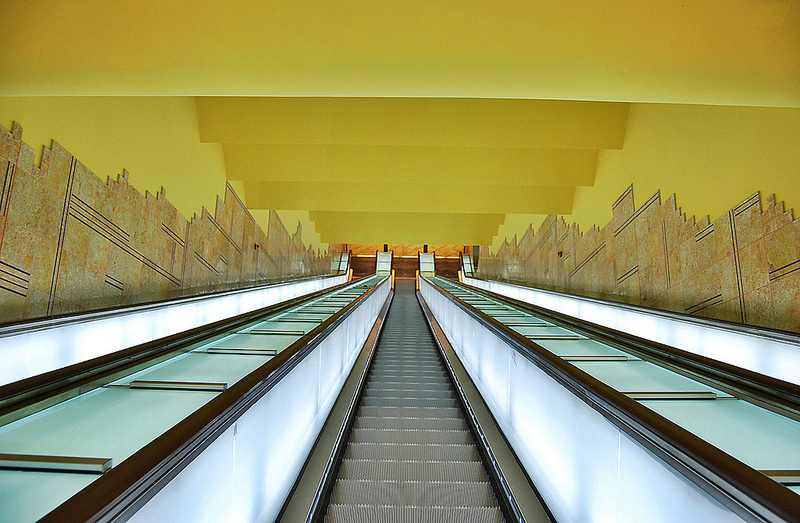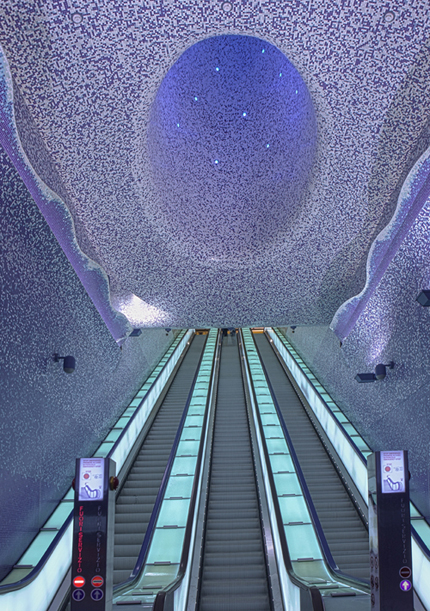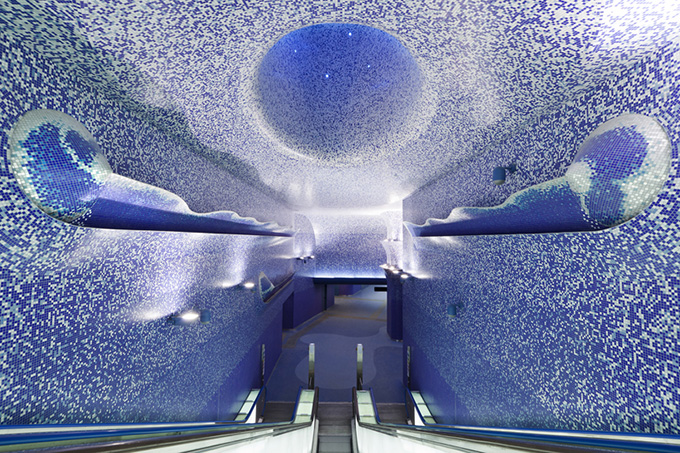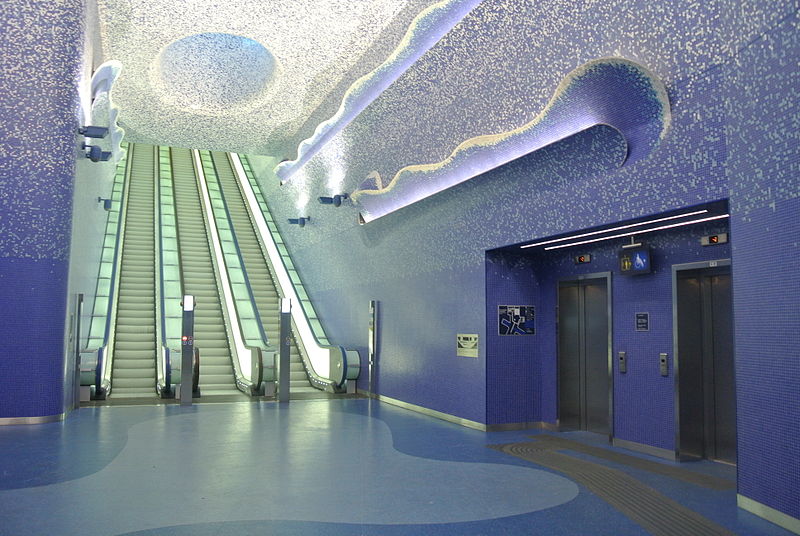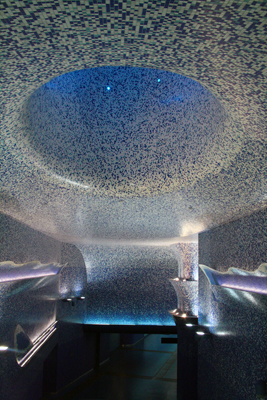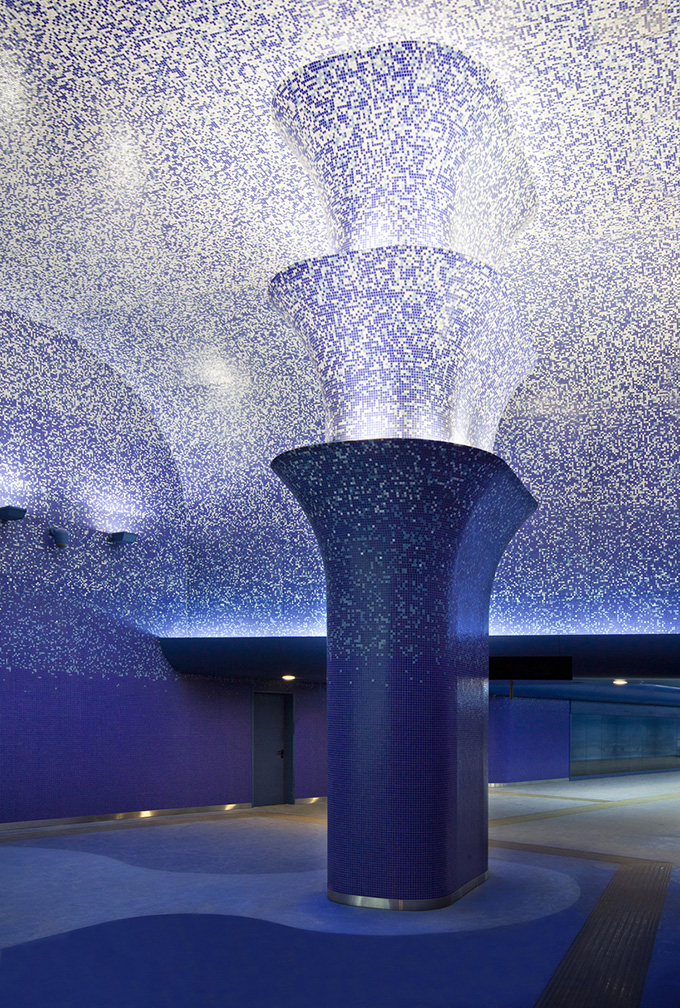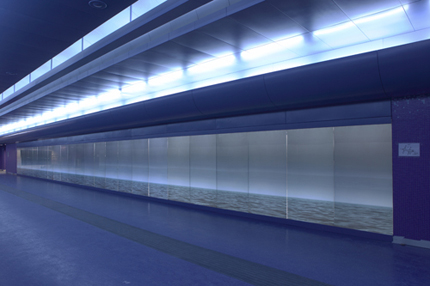Toledo Metro Art Station

Introduction
“Within the program Neapolitan subway stations prestigious international architects responsible corresponded us of Toledo, with a satellite access in the center of the Spagnoli Quartieri. We are also responsible for the development of the squares placed on these accesses. The most outstanding feature is the huge crater Toledo connecting the plaza level in the great hall located about 38 feet below. The final stretch of Avenida Diaz, located on the station becomes a pedestrian plaza, where, among other functions, shelter the current market is given by a forest of rigid umbrella. A particular attraction of the project is working closely with prestigious artists who have been invited “(Oscar Tusquets Blanca).
Project
The project architect Tusquets Blanca Toledo Metro Station, which has worked for seven years, also affects the upper area has been transformed into a pedestrian area greatly improved aesthetically. The communication between the internal space and the external is done through structures-skylight, from the street, which allow entry of sunlight in underground areas.
Built 50 meters deep, with 43,000 m3, the season extends below the water table and is the deepest station built on Line 1 of the city to date.
Natural light penetrates deep into the station through truncated cones in hexagonal sections as part of urban furnishing in the new plaza.
Situation
Toledo Metro Station, opened in 2012, belongs to the underground line 1 and is located just off Via Toledo, one of the most important shopping streets in Naples, Italy. A second access to the station is projected for 2013 on the side of Quartieri Spagnoli (Spanish Town), at the intersection of Via Diaz and Via Montecalvario.
Concept
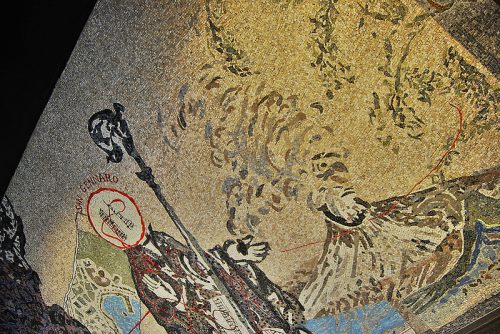
Seasons of Art, of which the station is part Toledo, born of a project sponsored by the City for places used by citizens in their daily mobility and offer more attractive, while all users encounter with contemporary art.
The interior and exterior spaces of these stations have received more than 180 works by 90 renowned contemporary authors, constituting one of the most interesting examples of “decentralized museum” distributed throughout the city.
The realization of these stations, led by internationally renowned architects has been a major refurbishment in a vast area of the urban fabric. In this case the Toledo Art Station of Metro Line 1 was designed around the themes of earth, water and light. Using Colors, reinforced by spectacular mosaics, the transition from land to sea is established. The black earth, ocher of the tuff and the blue sea occur in a stunning gradation of tones.
Spaces
Completely closed to vehicle traffic, the last stretch of Via Diaz becomes an outdoor environment perfectly suited to provide a relaxing haven for pedestrians and an area of tranquility amidst the busy Via Toledo.
On a pedestrian square umbrellas in addition to protection from sun and rain at market stalls operating under its protection, overnight offer a picturesque landscape when illuminated by LED embedded in their decks.

Level -1
The concourse level in architectural design integrates the remains of the walls belonging to the Aragonese period (1484-1501), while a plowed field taxed Neolithic, found during excavation work at the station, outlined in Station Museum, “Stazione Neapolis” located in the corridor connecting the station to the National Archaeological Museum.
Level -2
Descending level, change the colors and coatings, going to a bright yellow that recalls the warm colors of the earth and the Neapolitan tuff, up to the level 0, at sea level, indicated by the transition to a dramatic blue mosaic, increasingly intense as we move towards the depths of the station.
Cota 0
At this level a monumental underground room dominated by the charm of the mouth of the “Crater of light”, a deep and wide cone that permeates all levels of the station, connecting the street with the spectacular lobby built 40 meters underground appears. Noting inside can be recognized at the other end sunlight and a suggestive play of light.
Materials
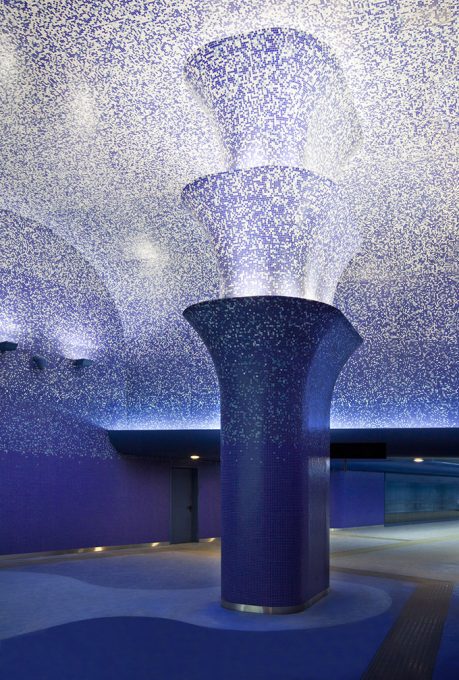
In the lining of the first underground level predominantly black, an allusion to the asphalt of the contemporary city, highlighting the appearance of large mosaics William Kentridge, made of stone and small mosaic glass paste.
- Mosaics William Kentridge
The first is a long procession of dark figures, many of them inspired by the history of the city of Naples, guided by the patron saint of music, San Gennaro towards a fund to which all the characters are directed at a slow pace, representing the project for Railway Central city of Naples from 1906, “Ferrovia Centrale per la città di Napoli, 1906 (Naples Procession)”.
The second mosaic is placed above the escalators, is entitled “Bonifica quartieri dei bassi di Napoli in relazione alla metropolitan ferrovia, 1884 (Naples Procession)” Rehabilitation of the slums of Naples “. In this case the fund used for the background of the work is the famous first project for a metro in Naples, conducted by the versatile Lamont-Young.
- LED
The “Crater of light,” Busquet work, going through all levels of the station and has a fascinating interplay of LED lights controlled by software that has been programmed by Robert Wilson “Relative light”. This mosaic was carried out on a metal base.
- Waves and marine panels
The play of light on the myriad of small glass tiles in shades of blue, take the visitor into a seascape. On the walls of the hall “underground” you can admire the “Waves” Waves relief designed by Oscar Tusquets Blanca on foil, whereas when entering into the gallery maritime panels Robert Wilson, called appreciated “By the sea….you and me “, digital prints on lenticular panels backlit with LEDs. There are also works by Achille Cevoli. They combine light with small glass mosaics in shades degradation.
The truncated cones that allow natural light into the station and in the public space of the street become small chimneys that only a few inches of soil are steel tower.
Video
